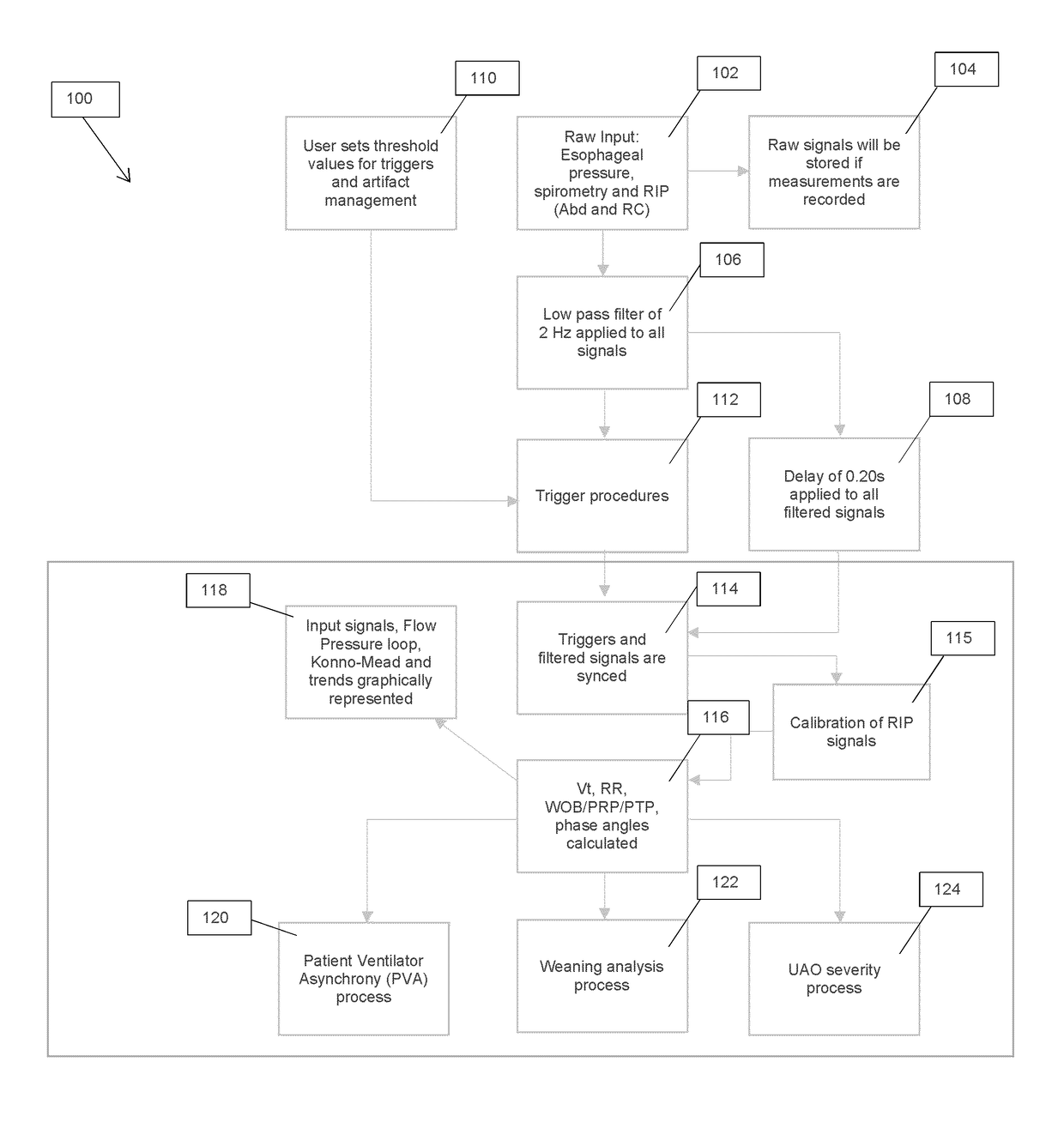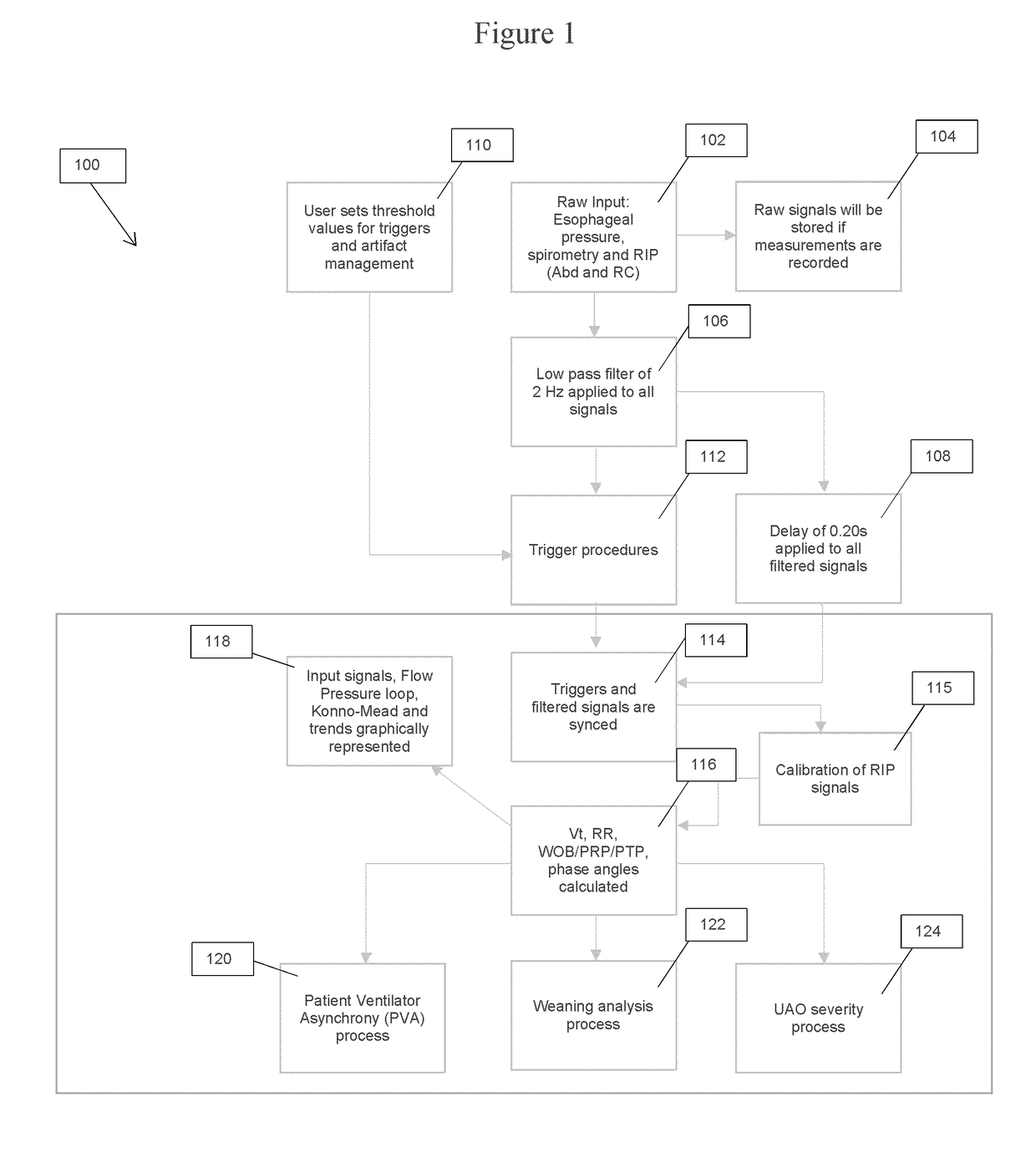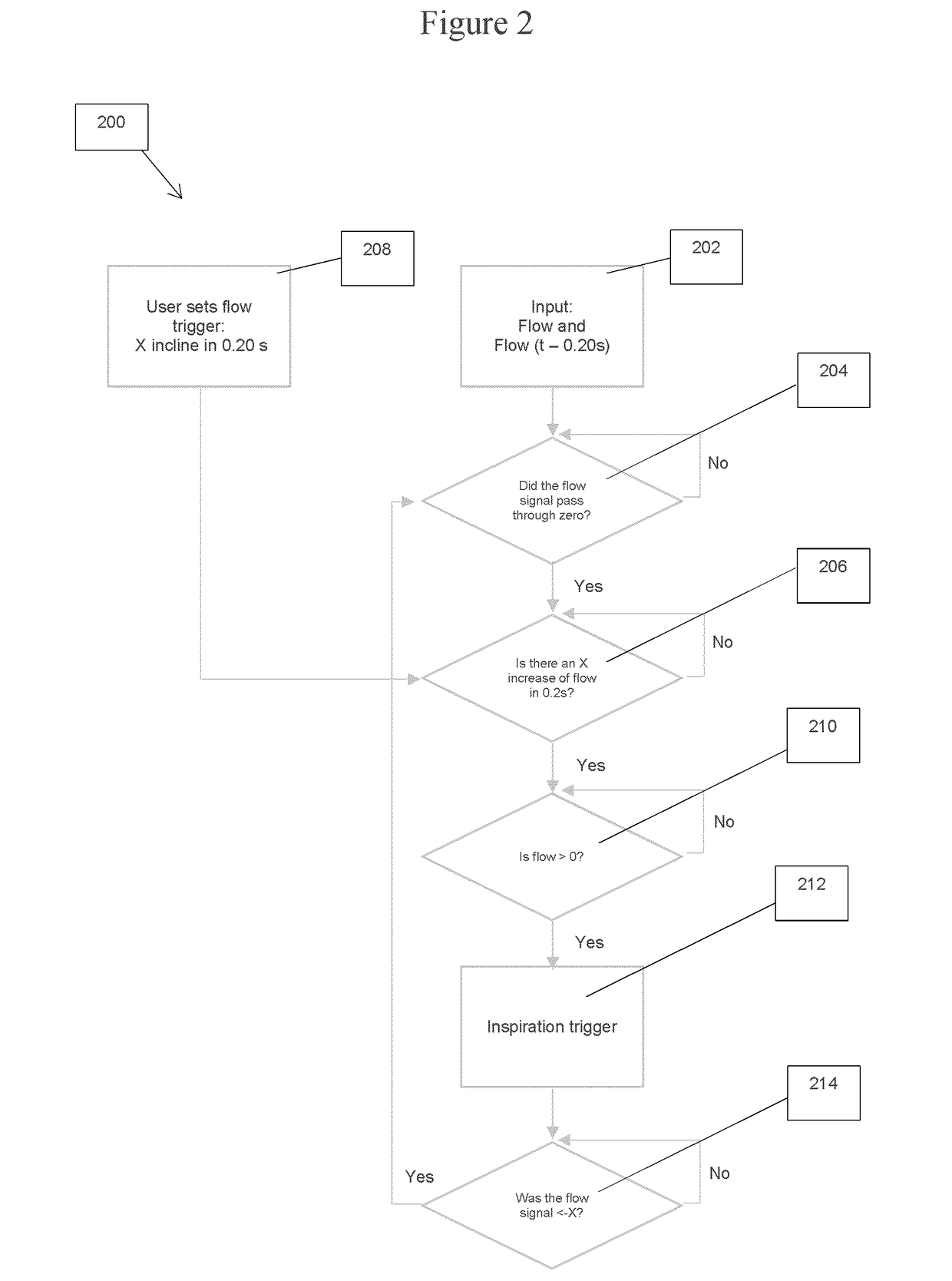Method, system and software for assessing extubation failure
a technology of extubation failure and system, applied in the field of method, system and software for assessing extubation failure, can solve the problems of increasing the length of stay in hospital and intensive care unit, short and long term morbidity, and the risk of re-intubation is high, and the risk is high
- Summary
- Abstract
- Description
- Claims
- Application Information
AI Technical Summary
Benefits of technology
Problems solved by technology
Method used
Image
Examples
example 1
[0134]An interventional trial in intubated and ventilated children admitted to the pediatric or cardiothoracic intensive care units was performed. Children were included if they were between 37 weeks corrected gestational age and 18 years, were intubated for at least 12 hours, and had a planned extubation from 7 am to 5 pm Monday through Friday, when research personnel were available. Children were excluded if they had a contraindication to receive an esophageal catheter (high risk of bleeding, esophageal abnormalities) or Respiratory Inductance Plethysmography bands (abdominal or chest wall defects).
Study Protocol
[0135]After informed consent, an age appropriate esophageal balloon catheter (Carefusion, Avea SmartCath 6,7, or 8 Fr) was placed through the nose to the lower ⅓ of the esophogus, with catheter position either by chest radiograph or monitoring deflections of pressure during brief endotracheal tube occlusions [Coates A L, Davis G M, Vallinis P, Outerbrid...
example 2
Outcome Determination: Upper Airway Obstruction
[0138]Post extubation UAO was assessed by examining the combination plot of calibrated Respiratory Inductance Plethysmography as a measure of flow, and esophageal pressure for the presence of inspiratory flow limitation. Inspiratory flow limitation is characterized by a disproportionately high inspiratory effort (negative esophageal pressure) relative to the increase in flow. RIP flow was calibrated under two conditions: while spontaneously breathing on CPAP of 5 prior to extubation using an algorithm called Quantitative Diagnostic Calibration, and during a NIF maneuver prior to extubation as an isovolume maneuver (Sackner, 1989 #319). We have previously demonstrated that NIF calibration (isovolume conditions) was superior to QDC on CPAP, particularly as UAO worsened. For this reason, NIF calibration of RIP was used for the primary outcome of inspiratory flow limitation using the combination of RIP and esophageal manometry. Flow limitat...
example 3
Analysis
[0139]To assess whether the objective characterization of UAO severity was relevant against clinical outcomes, the UAO severity parameter, gauged 5 minutes after extubation, was evaluated against the outcome of re-intubation within 48 hours with an area under the curve (AUC) of the receiver operating characteristic (ROC) plot.
[0140]To assess whether the objective parameter was different than clinical assessment of stridor, we collapsed the Westley stridor scores of physicians, nurses, and respiratory therapists into very mild (stridor but no retractions), mild, moderate and severe categories based on the presence of stridor and the severity of gauged retractions. We report the predictive ability of these scores 5 minutes after extubation on the outcome of re-intubation, as well as describe the inter-observer variability between providers when assessing post-extubation UAO 5 and 60 minutes after extubation, as well as the variability between clinical providers and the objecti...
PUM
 Login to View More
Login to View More Abstract
Description
Claims
Application Information
 Login to View More
Login to View More - R&D
- Intellectual Property
- Life Sciences
- Materials
- Tech Scout
- Unparalleled Data Quality
- Higher Quality Content
- 60% Fewer Hallucinations
Browse by: Latest US Patents, China's latest patents, Technical Efficacy Thesaurus, Application Domain, Technology Topic, Popular Technical Reports.
© 2025 PatSnap. All rights reserved.Legal|Privacy policy|Modern Slavery Act Transparency Statement|Sitemap|About US| Contact US: help@patsnap.com



